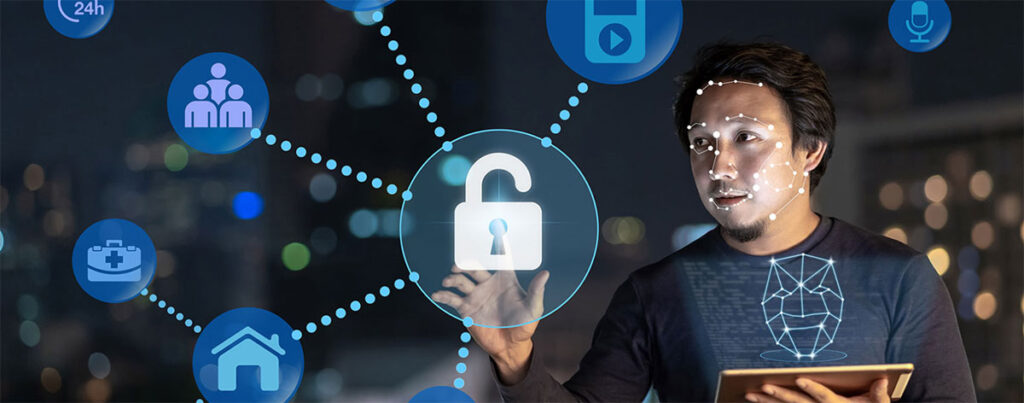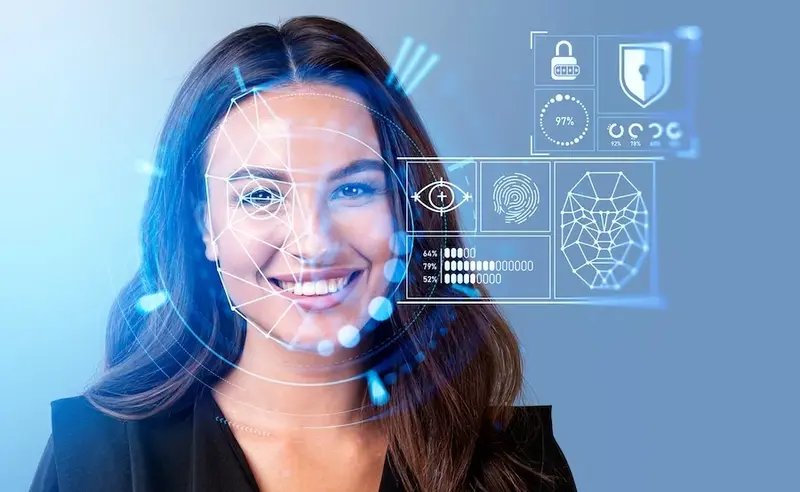Quick Link
Technology for Facial Recognition
Facial recognition technology has quickly emerged from its specialized field to become a widely used tool with a variety of uses, including personal device authentication, marketing, and security. Even if people utilize technology more and more in their daily lives, ethical questions about it continue to garner public attention. This in-depth analysis will focus on the ethical issues surrounding facial recognition technology and how it affects consent, privacy, accuracy, and society norms.
The process of identifying or authenticating people using a biometric system based on their facial traits is known as facial recognition technology. It is normally done by collecting an image of an individual’s face, data analysis of particular distinctive patterns, and matching it against a database of known faces. This technology has the potential to be employed in numerous domains, including unlocking gadgets, surveillance, and advertising.
Using cameras or other sensors, the system records a digital picture or video of a person’s face.
Key elements from the picture, such as the separation between the eyes, nose shape, and jawline contours, are extracted using facial recognition algorithms.
Verification and Matching: To identify or authenticate a person, the essential attributes that were extracted are compared to those in the database.
Current Uses of Face Recognition Technology
Security and Surveillance: Face recognition is currently being used to locate individuals and identities in public spaces.
Personal Devices: Face recognition is now widely used in cellphones to unlock and power on laptops.
Marketing: It also refers to individualized experiences and focused advertising.
Law enforcement: This aids in the suspect’s tracing and case resolution.
Ethics Concerning Facial Recognition Technology
Invasion of Privacy
There are various privacy-related risks with facial recognition technology. The gadget’s ability to take and process people’s faceprints without getting their consent immediately contradicts assumptions and common knowledge about privacy. This has been seen as especially divisive in public areas because individuals are unsure of whether they are being watched or not.
Constant Monitoring: Continuous and everywhere use could give rise to a surveillance state-a place where a man is followed and recorded wherever he goes.
Data Collection The huge amount of data being collected allows for the creation of elaborate profiles, making data security and misuse a big concern.
Surveillance vs. Public Safety
Face recognition proponents contend that by enabling law enforcement to locate and identify lawbreakers, face recognition improves public safety by discouraging crime. However, striking a balance between privacy and security raises serious ethical issues. This turns into a balancing act between the preservation of individual privacy rights and the benefits of greater security.
Lack of informed consent, wherein many individuals are ignorant of how their faces are being scanned and analyzed when they are out in public, is one of the major ethical problems with facial recognition technology.
Consent The subjects must consent to the collection and processing of their facial data and be fully aware of it. It also entails knowing who will have access to such information and how it will be used.
Options to Opt Out For anyone who do not wish to be under the control of the facial recognition technology, there must be an easy way to opt out.
The setup and operation of facial recognition technology ought to be transparent. Governments and organizations should be open and honest about the extent of their monitoring and how they use facial recognition technology, making sure that their actions don’t go against the law or ethical standards.
The quality of the image, the algorithm’s complexity, and the lighting conditions can all affect accuracy. These disparate accuracy levels mean that multiple false identifications resulting from inadequate recognition could have extremely serious repercussions for the individual.
Negatives and False Positives Face recognition mistakes may result in more erroneous arrests, access denials, or other negative outcomes.
Different algorithms demonstrate different levels of accuracy in general, doing better on one demographic than on another.
Bias and Discrimination
It has been shown that age, gender, and race all affect facial recognition system biases. Research has indicated that certain algorithms may be less accurate in detecting women or people with darker skin tones, which could result in discrimination.
Algorithmic Prejudice Certain types of prejudices that project into the already unequal society and further injustices may be retained by facial recognition systems.
Implications for Ethics Thus, it is necessary to address the algorithmic bias in face recognition technology to ensure that it does not contribute to the current discriminatory practice.
Data Security Risks
Facial recognition data create significant risks for security in storage and management. The leakage of information may expose sensitive information that can be misused.
Data Breach A high-profile data breach with facial recognition can have disastrous effects on both individuals and organizations.
Protecting Data from Misuse Proper protection of data would amount to stringent security measures to prevent such information from falling into the hands of misusers.
Facial recognition technology has many other abusive purposes than originally intended, which include:
Stalking and Harassment: Unauthorized use of facial recognition can lead to stalking or harassment since one can locate other people without their consent.
Authoritarian Control: In authoritarian governments, the use of facial recognition suppresses dissent and monitors political adversaries.
Case Studies and Real-World Examples

Use in Law Enforcement
Success Stories
Facial recognition technologies have been credited with solving high-profile cases and improving public safety. It has, for instance, been used to identify criminal suspects and locate missing persons.
Controversies
Notwithstanding, the use of facial recognition by law enforcement agencies has raised many storms of controversy. There have been incidents of wrongful arrests and false identifications, which beg the question of the reliability of this technology and its propensity for abuse.
Public Space Deployment
Smart Cities
Facial recognition finds its application in smart cities in monitoring open spaces, controlling the traffic flow, and reinforcing security. It gives rise to several ethical dilemmas related to privacy and surveillance despite a number of advantages.
Public Response
The reaction on the part of the public toward the use of facial recognition in public places is varied. Some people are for it because there is more security, while others resent what they perceive as intrusion into their private lives and erosion of civil liberties.
Corporate Use in Marketing
Personalized Advertisement
Retailers and marketers use face recognition to study customer demography and preference for effective advertising and personalized shopping. This application certainly raises a number of questions regarding ethical usage of personal information and consent.
Customer Privacy
Often, consumers are uninformed as to when and how their face data are collected and used for marketing purposes. Ensuring transparency and acquiring informed consent will be quite necessary for ethical concerns.
Regulatory and Legal Perspectives
Existing Regulations
Data Protection Laws
Most states have legislated data protection laws, under which they govern the collection and processing of biometric data, in which category facial recognition falls. For example, the General Data Protection Regulation by the European Union lays down guidelines with regard to the processing of biometric data.
Some cities and countries have banned or restricted facial recognition technology due to privacy and ethical concerns. Such decisions reflect the growing awareness of and caution regarding the implications of the technology.
Future Legal Developments
Proposed Legislation
The debates and discussions on facial recognition technology continue to define its legal framework, as there is a call for laws on how it should be used. Proposed laws are drafted in a bid to address ethical issues, ensure more transparency, and protect individual rights.
Ethical Guidelines
The development of ethical guidelines on the use of facial recognition technology is the greatest need of the hour for responsible deployment. The former at least should spell out issues on privacy, consent, accuracy, and data security.
Developing Ethical Frameworks

Principles for Ethical Use
The development of ethical frameworks for facial Recognition Technology develops the principles to include respect for privacy, transparency, fairness, and accountability. These principles ensure that the technology is used responsibly.
Stakeholder Involvement
It requires active involvement among the policymakers, technologists, and civil society organizations towards a set of comprehensive ethical frameworks. This collaboration implies that diversified perspectives will be taken into consideration.
Implementation of Best Practices
Transparency and Consent
Transparency as to the facial recognition technology being implemented, and consent from the individual are key aspects an organization should look out for. Information pertaining to what type of data is collected and for which purpose, along with how this data is stored, must clearly be presented.
Curbing Bias
These range from improving the diversity of the training dataset to embedding mechanisms that can detect bias, or the regular auditing of algorithms for their fairness.
Data Security Measures
The implementation of proper data security-security by encryption and access controls-is very important in the protection of face recognition data against unauthorized access and misuse.
Accountability and Oversight
Accountability and oversight mechanisms would ensure that face recognition technologies are used in the most ethical manner and in a manner that would certainly comply with regulations. This involves periodic reviews and audits of technology deployment.
Last Words of Wisdom
One of the main facets of biometric system development is facial recognition, which offers numerous benefits and a wide range of applications. However, ethical concerns have brought up crucial issues pertaining to consent, privacy, accuracy, and societal influence. In actuality, technology is changing daily, and handling these ethical issues is essential to utilizing it sensibly and in a way that upholds social norms.
This is where the right framework of morality, law, and best practices may help to limit the problems brought on by facial recognition technology. This is a tough balance to strike: weighing security and convenience against the protection of an individual’s fundamental right, as one steps into an increasingly complex ethics landscape to shape the future of Facial Recognition Technology compatible with and upholding the basic principles of privacy and fairness. This blog delves deeply into a few moral issues surrounding the application of facial recognition technology.
For more content like this visit for online earning blogs visit autoearn or visit our Facebook page.


